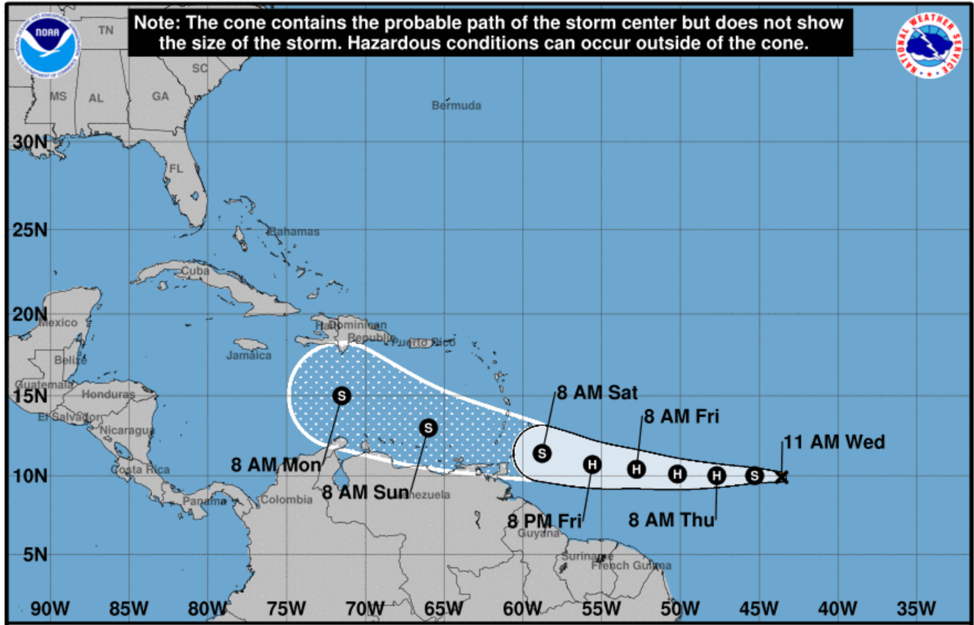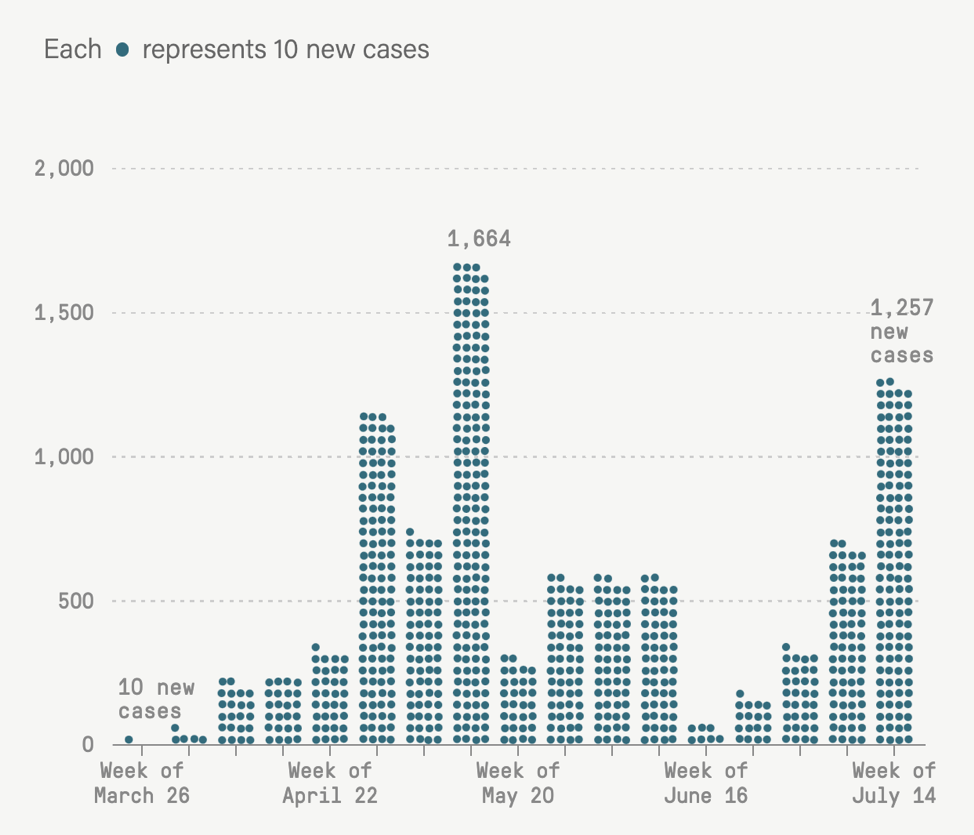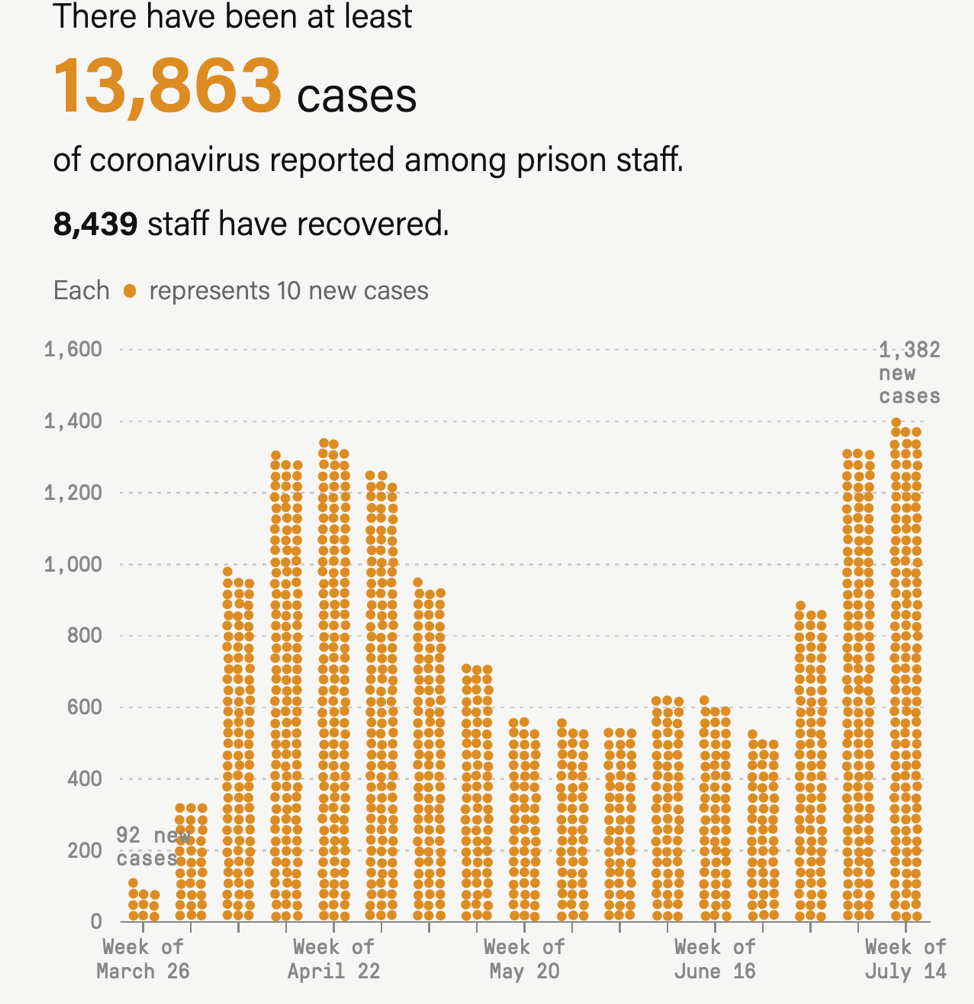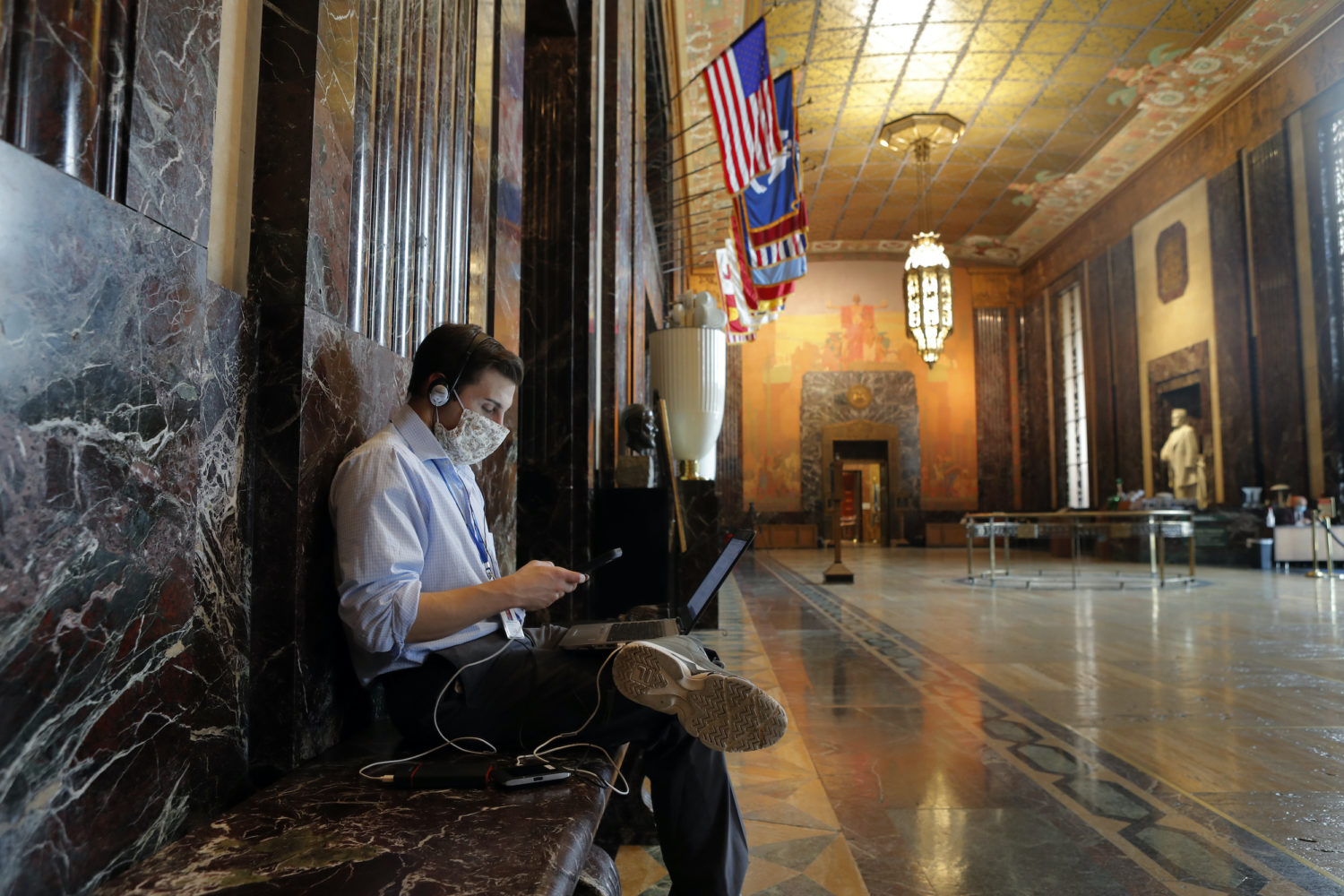 Covering COVID-19 is a daily Poynter briefing of story ideas about the coronavirus and other timely topics for journalists, written by senior faculty Al Tompkins. Sign up here to have it delivered to your inbox every weekday morning.
Covering COVID-19 is a daily Poynter briefing of story ideas about the coronavirus and other timely topics for journalists, written by senior faculty Al Tompkins. Sign up here to have it delivered to your inbox every weekday morning.
I am putting this first in today’s column not because it is a story you will report, but because it is vitally important to journalists.
Researchers usually wait until they have completed and published their studies before they release data. But sometimes, when the early findings are really important to make public, they release the preliminary results. This is such a study.
The Reuters Institute for the Study of Journalism and the University of Toronto interviewed 73 journalists from international news organizations in June and found:
70% suffer from some levels of psychological distress and responses suggest that 26% have clinically significant anxiety compatible with the diagnosis of Generalized Anxiety Disorder which includes symptoms of worry, feeling on edge, insomnia, poor concentration and fatigue.
Around 11% of respondents report prominent symptoms of post-traumatic stress disorder, which include recurrent intrusive thoughts and memories of a traumatic COVID-19-related event, a desire to avoid recollections of the event, and feelings of guilt, fear, anger, horror and shame.
The study said the people interviewed so far work at large, established newsrooms and have a lot of experience. Once researchers drill down to smaller news organizations, they may find even worse problems. One stressor is that general assignment reporters now find themselves covering health beat stories they know little about.
One respondent wrote: “I am more stressed out because I am unable to cover the outbreak in my country as other countries in the west have done. I feel like a hypocrite because I am only allowed to follow what the government tells me to and I am not able to shed light on how the rest of the country is handling this outbreak.”
Western journalists feel a level of the same frustration. Journalists also said they feel ethical pressures covering stories that also affect themselves, their families and friends. Stories about racial tension, economic instability and a pandemic are not just stories you are covering about other people, they are your own stories as well. And then there is the frustration and pressure that comes when reporting a story that generates public hostility and media mistrust.
60% of the journalists surveyed so far said they are working harder during the pandemic at the same time that they have increased responsibilities at home. Younger journalists said that older journalists, who might be more vulnerable to COVID-19, are not assigned as many pandemic stories. The journalists interviewed so far give their news organizations a score of 6/10 when it comes to how supportive they have been during the pandemic.
You can watch an hourlong webinar from researchers Meera Selva, director of the Journalist Fellowship Program at the Reuters Institute and a former journalist for the Associated Press; and Dr. Anthony Feinstein, professor of psychiatry at the University of Toronto and a neuropsychiatrist. (The discussion about COVID-19 pressures on newsrooms starts around 31:00.)
A hurricane is brewing. Let’s not panic in a pandemic.
A tropical storm is brewing in the Gulf of Mexico and heading toward Texas. Another storm is growing that could be stronger.

(National Oceanic and Atmospheric Administration)
I am not saying that this tropical storm (which will have become a hurricane by the time you read this) will hit the U.S. But I am saying that some hurricane will hit the U.S. in the next eight weeks. And I am asking how we will handle evacuations in a COVID-19 era.
The Centers for Disease Control and Prevention warned that we will need “more time than usual” to prepare for hurricane season this year.
The Federal Emergency Management Agency awarded $100 million in funding to state and territorial government agencies to prevent, prepare for and respond to the COVID-19 public health emergency. How has your local emergency management agency used that money, if it got any of it?
FEMA said it expected the money to be spent on:
- Reviewing, modifying, and/or executing logistics and enabling contracts to increase capability to stockpile and provide necessary resources needed to stabilize lifelines.
- Modifying evacuation plans to account for limited travel options and increased time needed for health care facilities in a COVID-19 environment.
- Identifying mass care and shelter options that meet CDC guidance and mitigate risks to communities and vulnerable citizens.
- Emphasizing collection, analysis and sharing of data to strengthen decision-support capabilities.
How will nursing homes evacuate seniors in a pandemic?
Past evacuations involved people using mass transit and airlines to get out of the path of storms. But in a pandemic, we need to avoid packing buses and planes, so evacuations will need much longer lead times. This becomes especially problematic when evacuating hospitals and nursing homes, which happens slowly under better circumstances.
In any storm recovery, volunteers are critically important. Will volunteers pitch in during a pandemic in the ways they always have — rebuilding, cleaning, feeding and sheltering storm victims?
Many coastal states are also COVID-19 hot zones. How will other states feel if a bunch of Floridians come streaming in to their recovering states to escape a storm?
Schools often become evacuation centers in hurricanes, but what about in a pandemic?
FEMA’s COVID-19 hurricane plan includes recommendations that local planners think about “non-congregate” evacuation shelters — that is, shelters that provide individual accommodations. The plan explained:
Non-congregate shelters include, but are not limited to, hotels, motels, and dormitories. FEMA Regional Administrators will have delegated authority to approve requests for non-congregate sheltering for hurricane-specific disasters for the 2020 season.
I have spoken with several news directors in hurricane-prone markets who said they are concerned about how hurricane coverage would be affected by staff working remotely rather than in TV stations with emergency backup electricity.
One news director told me she worries that some people will not want to come into a crowded newsroom. As a precaution, they are trying to set up “a weather office bubble” that would allow meteorologists to enter and exit the newsroom without coming in physical contact with others. They also are working on ways to keep weather staff from having to work in a studio and instead go live from the weather bubble, which involves moving weather computers and other equipment.
In some newsrooms, staff sleep at the station during hurricane coverage. So stations are working on finding “assigned sleeping areas.”
Journalists, the pandemic is going to last through all manner of predictable and unpredictable weather and seasonal disasters that cause disruptions. But the way we respond to those disruptions — from hurricanes to forest fires, earthquakes, floods and winter storms — will be different this time. The more the public and your newsroom understand about the plans in place, the better.
[the_ad id=”667826″]
Flood insurance grace period extended
Just in time for a tropical storm to hit Texas, and with the tropics stirring up, FEMA said part of the last economic stimulus plan was to extend the grace period to renew flood insurance policies from 30 to 120 days. FEMA released a statement:
“FEMA understands the sense of urgency related to financial hardships and wants to be proactive,” said David Maurstad, deputy associate administrator of FEMA’s Federal Insurance and Mitigation Administration, who oversees the NFIP. “We want to make sure that policyholders don’t have to worry that their policy will lapse during the spring flood season or into the start of hurricane season. We hope this extension will give policyholders some peace of mind and allow them extra time to renew their policies to ensure they are covered should a flood loss occur.”
New calculations released last month show “nearly twice as many properties may be susceptible to flood damage than previously thought,” reporting from The New York Times found. The new mapping takes into account sea-level rise as well as rainfall along creeks that do not show up on federal flood maps.
Numerous cities nationwide — as diverse as Fort Lauderdale, Fla., Buffalo, N.Y., and Chattanooga, Tenn. — show the startling gap in the risks. In Chicago alone, 75,000 properties have a previously undisclosed flood risk. And minority communities often face a bigger share of hidden risk.
“Millions of home and property owners have had no way of knowing the significant risk they face,” said Matthew Eby, founder and executive director of the First Street Foundation, a group of academics and experts based in New York City who compiled the data, creating a website where people can check their own address.
Prisons are slowly reopening to outsiders
The Marshall Project is tracking how each state is opening or restricting outside visitation in prisons, which have been COVID-19 epicenters. Marshall reported:
Eight corrections systems around the country now allow prison visitations again, with restrictions, after spring lockdowns. Twenty-six states still have restricted visitation, except for legal visits, and 18 others have closed off all public visitation. Among the latter is Delaware, which resumed limited visitation late last month only to shut it down again last week.
In 17 states, legal visits are included in the shutdown and have been for months. On the federal level, Marshall said, “all visitation, including legal visits, has been suspended by the Federal Bureau of Prisons since March 13. Attorneys may be approved for an in-person visit on a case-by-case basis.”
Marshall also keeps a running count (likely an undercount due to lackluster state data) of COVID-19 cases and deaths in prisons. Marshall counted 681 prisoner deaths related to COVID-19. Texas, Ohio, Michigan, New Jersey, California and Florida lead the country in COVID-19 deaths involving prisoners.
By July 14, at least 64,119 people in prison had tested positive for the illness, a 13% increase from the week before.
New cases among prisoners reached an all-time high this week after slowing down in June. The growth was driven by big jumps in prisoners testing positive in Texas, California and the federal Bureau of Prisons as well as outbreaks in Idaho, Iowa, Oregon and South Carolina.

New COVID-19 cases among prisoners in state and federal prisons (Data and graphic from The Marshall Project)
We know much less about how prison staff are affected by COVID-19. Only 18 states release that data: Alabama, Arkansas, Connecticut, Idaho, Indiana, Louisiana, Maryland, Montana, Nevada, New Mexico, North Carolina, North Dakota, Pennsylvania, South Dakota, Tennessee, Texas, Vermont, West Virginia. Even with that sample, new COVID-19 cases among prison staff reached a high this week.

New COVID-19 cases involving staff in 18 states and all federal prisons (Data and graphic from The Marshall Project)
Some dry cleaners have dried up, others found opportunity
There is one small upside to the pandemic — and we have to search hard to find an upside — but I am spending a lot less on dry cleaning. Virtually everything that requires freshly pressed clothes has been canceled, from weddings to church services, proms to funerals. Dry cleaning is a $9.2 billion industry in the U.S., involving 32,380 businesses.
But there is another version of this story I have not seen and that is the segment of dry cleaning businesses that said they have seen an uptick in business involving commercial accounts that are spending more money sanitizing and cleaning.
We’ll be back Monday with a new edition of Covering COVID-19. Sign up here to get it delivered right to your inbox.
[the_ad id=”667872″]
Al Tompkins is senior faculty at Poynter. He can be reached at atompkins@poynter.org or on Twitter, @atompkins.
[the_ad id=”667878″]







